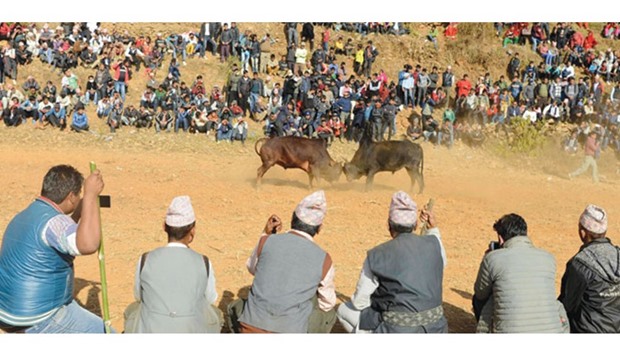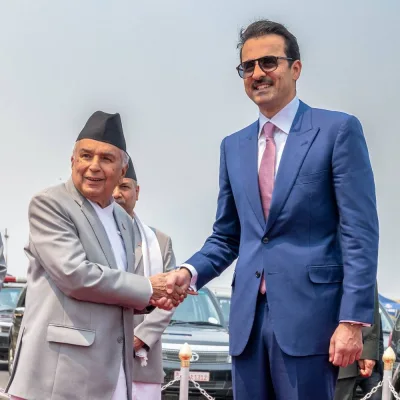The bulls pawed the ground sending a dusty cloud into the air before locking horns to a huge cheer from the crowd that had gathered in a makeshift arena in the Himalayan foothills of Nepal.
The bullfight in the remote village of Taraka, about 76kms (46 miles) from Nepal’s capital Kathmandu, takes place each year to mark the end of winter.
Thousands gathered to watch the fight on Saturday, which sees 14 pairs of bulls butt heads, with the winner of each bout taking home 3,000 rupees ($27) in prize money.
Unlike its Spanish counterpart, bullfighting in Nepal requires no matadors as the bulls – usually buffalo – fight each other.
The bulls are fed a special diet of eggs and lentils to prepare them for the fight – which comes at a quiet time for the farming communities of the area when there
is little growing in the fields.
“We feed them rice, flour, wheat, eggs and black lentils from five months ahead to make them strong,” said bull owner Madan Shrestha, 42, who has fielded a bull every year for about the last 12.
“My bull has fought against two-three others. He charges very hard so I am hopeful that he will win,” he added.
The festival has been held every year in Taruka for over a century, bringing thousands who watch the bouts from the steep terraced banks that overlook a flat plateau.
“We celebrate Maghe Sankranti fair here and it is fun to watch the bulls fight,” said one local resident who comes each year.
Unlike European bullfighting, bloodshed is a rare sight as the rules dictate that the bout ends once the animal tires of fighting.
Nevertheless, animal rights activists have attacked the festival, arguing that it causes injuries to the bulls, and have campaigned to have it banned.

Nepalese spectators watch a bullfight during the Maghesangranti Festival in Taraka, some 76kms from Kathmandu, yesterday. Thousands of Nepalis gathered at an open ground in the Himalayan foothills to watch a bullfighting festival that heralds the end of winter.


